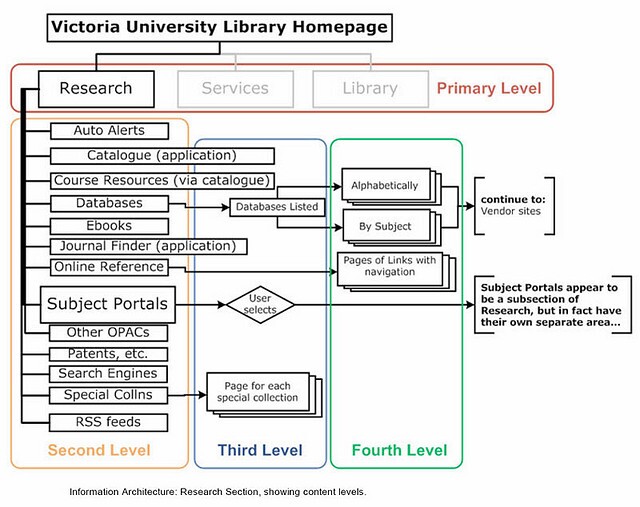Finding information is one of the main reasons people visit websites, so organizing web information is extremely important. Nobody likes searching longer than necessary for what they want. Sadly, many websites have great content, but it is hard to get to that content. They fail to implement a solid information architecture.
Information architecture refers to the way that information is organized on a website as well as the methods of viewing and gaining that information. “A good IA helps people to understand their surroundings and find what they’re looking for – in the real world as well as online,” (IA Institute). Shown below is an image of an IA in flowchart form:

You may be wondering what IA has to do with UX. As stated above, a user must know what is going on around them as they navigate a website. An IA has already failed if a user ever asks the questions “Where is this?” or “Is this what they want me to do?”
There are many things to consider while creating an IA. Here are a few questions you can ask yourself to determine where to start. They are listed below (UX Booth):
- What is the flow of users through our site?
- How does the application help the user catalog their information?
- How is that information presented back to the user?
- Is that information helping the customer, and driving decisions?
Sources:
Lotin, Henri. “Information-Architecture-Methodologies.” Le Studio Graphique, Lotin Corp. Portfolio, 5 Dec. 2017, portfolio.lotincorp.biz/guide-debutant-architecture-information/information-architecture-methodologies/.
“What Is Information Architecture?” What Is Information Architecture? | IA Institute, www.iainstitute.org/what-is-ia.
“Complete Beginner's Guide to Information Architecture | UX Booth.” UX Booth Complete Beginners Guide to UX Research Comments, 22 Dec. 2015, www.uxbooth.com/articles/complete-beginners-guide-to-information-architecture/.